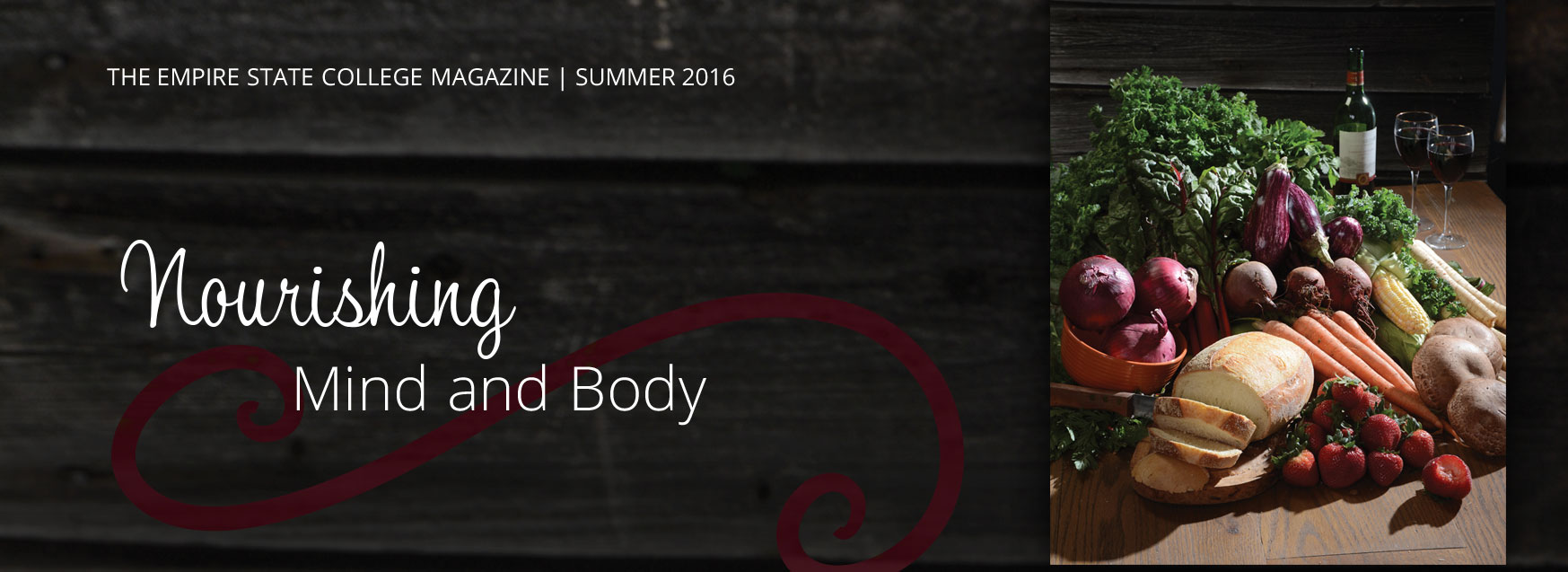
It’s a Fact: Blueberries Today Keep the Doctor Away
by Helen Susan Edelman

Growing up Italian, with family meals a joyful centerpiece of her childhood, Associate Professor Kim Stote says she “learned to love food.” Her grandparents had a garden and her grandmother was committed to “putting a healthy breakfast, lunch and dinner on the table. Lots of fruits and vegetables.”
From this nucleus of nourishment – both physical and spiritual – emerged Stote’s natural trajectory: a B.S. in Dietetics at SUNY Oneonta, a dietetic internship at the prestigious Cleveland Clinic Foundation, a Master of Public Health at the University of South Florida and a Ph.D. in Nutrition Science at Syracuse University. There she wrote a dissertation on the “Cardioprotective Effects of Chocolate and Almond Consumption in Healthy Women,” finding that it’s no myth – a bit of dark chocolate actually can have a salubrious effect.
Flash forward and Stote, now coordinator of Health Science studies at SUNY Empire, has become a staunch advocate for wild blueberries. In fact, she dedicated a Fulbright Scholarship experience on Price Edward Island, in Canada, to investigating their health effects, concluding that an 80-calorie cup of the dark, tiny, sweet superfruit packs “a serious nutritional punch.” Low in fat, high in fiber, the daily consumption of blueberries, “has promising effects on the cardio-metabolic biomarkers of women at risk for type II diabetes.” That means, in her short-term study, measurements improved for blood pressure and insulin sensitivity for these women, reducing their glucose, insulin and inflammation by taking stress off the body’s cells. Risk factors for diabetes may include being overweight, a family history of diabetes or having had gestational diabetes.
The same polyphenols that provide the blueberries’ dark color exist in cranberries, pomegranates, blackberries, strawberries and red and purple grapes, also both delicious and healthy, possibly helping to guard against heart disease. “Eat a cup of berries a day,” Stote advises, “half in the morning, half in the evening. Frozen ones will do, too.” (A connoisseur, Stote prefers berries off low bushes to berries off high bushes for their sweeter flavor.)
According to data Stote cited, blueberries have the potential to boost cognitive function, help prevent cancer and cardiac disease and alleviate hyperglycemia.
A registered dietitian and certified dietitian-nutritionist, Stote also has explored the health effects of nuts, cocoa, coffee, tea, whey protein and alcohol. She has applied her broad-ranging expertise in both hospital-based clinical practice and in academic settings, teaching at SUNY Oneonta prior to Empire State College. Additionally, Stote performed influential research through the U.S. Department of Agriculture Research Service, Beltsville Human Nutrition Center, which partnered with her in the P.E.I.-based Fulbright.
The point of studying the efficacy of blueberries was not purely theoretical, Stote points out. “The question is, will women do something about it, once they have the knowledge? Will they take better care of themselves? It’s no magic bullet – there is none – but maybe they’ll walk more, incorporate fruits and vegetables into their diets, be more aware.”
Stote confesses she loves to go to the grocery store to see what people are buying.
“We live in a culture of convenience,” she observes. “Think about fast food. But, isn’t it just as fast to grab a banana or a bunch of cut-up carrots, or, if you’re going to have that hamburger, okay, but what about eating an apple, too?”
She says people eat primarily for what food tastes like, not to satisfy hunger, or maybe because it’s the time of day they usually eat. However, she says, data shows people only eat about half the fruits and vegetables they need for a healthy, sensible diet that improves insulin levels, kidney performance or bowel motility, among other body functions.
“When I teach about human nutrition, I ask students to look at what the popular diets are, then we talk about what a healthy diet should be and ask this question: Is it sustainable? One of the joys of life is eating, so can you find a way of eating that a person is willing to stick with for life? I ask people what they want to do, I give them information, but you can’t force it.”